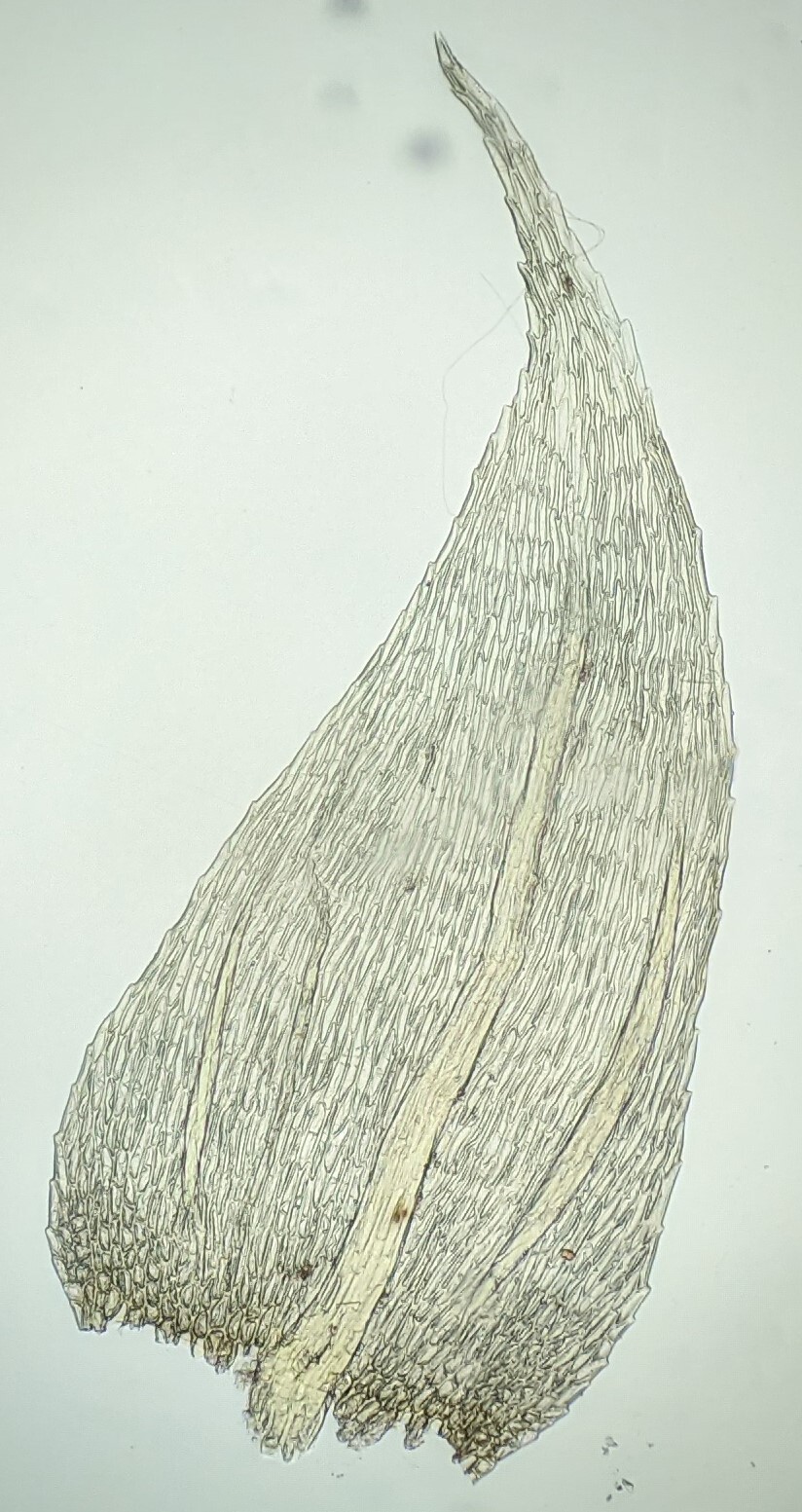Brachytheciastrum paradoxum
(Hook.f. & Wilson) Ignatov & HuttunenAutoicous. Loosely to densely interwoven mats on soil, rocks or tree trunks or stumps. Stems to at least 90 mm long, prostrate, ± pinnately branched, yellow-brown, covered with pale brown rhizoids, central strand present, branches 3–17 mm long. Stem and branch leaves slightly differentiated; cells linear, 60–105 μm long, 6–8 μm wide, smooth; alar cells irregularly quadrate to short-rectangular, 10–35 μm long, 7–18 μm wide, forming a poorly defined group. Stem leaves falcate-secund, ovate-lanceolate, 2–3 mm long, c. 0.5 mm wide, plicate, not concave, scarcely altered when dry; costa extending c. 2/3 leaf length, ending in stout abaxial spine; apex acuminate, without a hair-point; margins denticulate at least near apex, sometimes nearly to base, plane or weakly recurved towards base, without a border. Branch leaves strongly falcate-secund to nearly circinate, ovate to broadly ovate, 1–1.5 (–2) mm long, 0.25–0.7 mm wide, plicate; apex obtuse-apiculate to acuminate; margins denticulate at least near apex, sometimes to near base, plane or one or both sides partly or completely reflexed or recurved. Setae 10–22 mm long, papillose, red-brown. Capsules inclined to horizontal, oblong-ovoid, curved, c. 2–2.8 mm long. Operculum umbonate, 0.4–0.7 mm long.
GipP, CVU, EGU, VAlp. Mostly in subalpine woodland but also in more exposed alpine grasslands, outcrops and bogs. Also NSW and Tas. New Zealand, southern South America, and sub-Antarctic Islands in the Indian Ocean.
 Spinning
Spinning